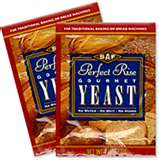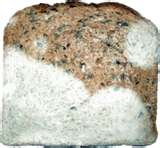******* Introduction *******
 "YEAST!"... What are you thinking of? There is a large bet that you are thinking
of a package found at the store used to make bread rise. "Mold!"... What did you
think of this time? Probably the nasty white or green fuzzy things growing on
old food, right?
"YEAST!"... What are you thinking of? There is a large bet that you are thinking
of a package found at the store used to make bread rise. "Mold!"... What did you
think of this time? Probably the nasty white or green fuzzy things growing on
old food, right?

But did you know yeast is considered a fungus? Did you know yeast and molds are found in soil particles, roots and rocks? Well, if you did not, the answer is in this introduction. Yeast and mold are members of the fungi (fungus) group and are microscopic cells that grow in long threads called hyphae. These organisms can differ in size, measuring from thousandths of an inch to few yards. Some fungi hyphae can group together and create "mycelium" or thick "rhizomorphs" which look like roots. However, their main importance of fungi to you and this introduction is their role in the environment, specifically the soil. Fungi are significant for their relations to nutrient cycling, decomposers, and water infiltrators. Fungi are usually grouped into three categorizes by their function.

Decomposers - saprophytic fungi - can convert dead organic material into fungal biomass, decompose carbon ring structures in some pollutants, and use complex substrates such as cellulose. Like bacteria, fungi are are important because they immobilize nutrients in soil. In addition, the "fungi waste" are natural acids which help increase the level of humic-acid in the soil.
Mutualists – the mycorrhizal fungi – colonize plant
roots. As plants release carbon, mycorrhizal fungi help solubolize phosphorus
and transfer soil nutrients to the plant. One major group of mycorrhizae, the
ectomycorrhizae, grow on the surface layers of the roots of trees. The
second major group of mycorrhizae are the endomycorrhizae that grow
within the root cells of grasses, row crops, vegetables, and shrubs. etc.

Pathogens or parasites, cause injury to plants or death. Some examples of pathogenic fungi are Verticillium, Pythium, and Rhizoctonia. However, many fungi also help control diseases.
Not everything in the soil, though, is good for it. Unlike fungi which seem to mostly help plant life and soil enrichment, aluminum is toxic and not at all essential for plants or animals. In spite of the fact that "aluminum is the most abundant mental in the earth's crust" (1), excess aluminum in soil is toxic to plants and some microbes, including fungi. Some problems caused by aluminum include stunted roots, decrease in phosphorus (P), decrease in sulfur (S), and some times decrease in soil fungi.
The 2008 E.S.S.R.E researchers jumped off the summer by setting out their sites and taking a "snapshot" of each site. After compiling all the data from each of the three sites on soil chemicals and microbes, we soon realized that as the level of aluminum increased the number of fungi decreased. These results gave us evidence to suspect the aluminum and its toxicity as the cause for the low numbers of yeasts and molds. In conclusion, we believed and tested our hypothesis...
If the level of aluminum increase then the number of soil fungi will decrease.
-------------------------------------------------------------------------------------------------------------------------------------------------------------------------------------------------
PHOTO CREDIT:
Photo 1 (Yeast ) - http://www.lowcarbluxury.com/reviews-breads.html
Photo 2 (Molded Bread) - http://www.williamsclass.com/SixthScienceWork/Classification/ClassificationNotes/ClassificationNotes.htm
Photo 3 (Mold Particle) - http://www.moldnose.com/
Photo 4 (Yeast Particles) - http://www.mrc-dunn.cam.ac.uk/research/cellular_regulation/research.php